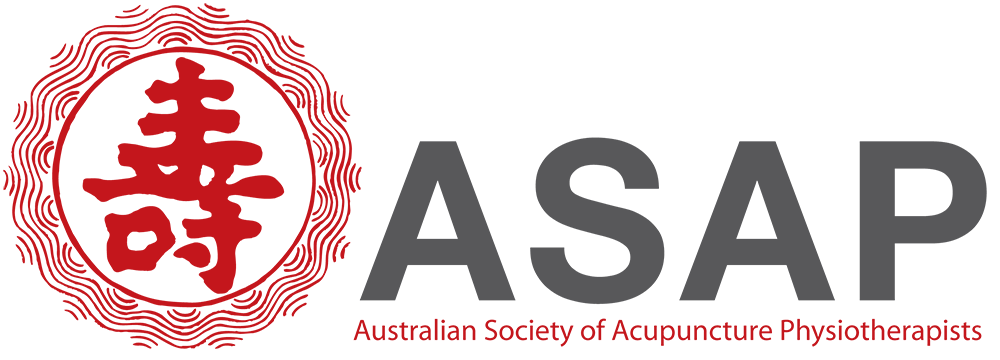Australian Society of Acupuncture Physiotherapists
This group was established in 2004 to promote and support acupuncture in the physiotherapy profession. We were the first National body in Australia to actively promote acupuncture within Physiotherapy. The aim of the ASAP is to provide a national identity for physiotherapists who used acupuncture as part of their clinical practice. The main function of this group is to promote continuing education opportunities in classically based acupuncture. One of the first achievements of the ASAP was the development of guidelines for safe practice which were made freely available. These guidelines have been adopted by many clinicians in Australia as well as being used by overseas organisations as the foundation of their own guidelines.
As a volunteer based group, we are able to function with minimal operational costs, any profits from courses can be used to sponsor courses in locations regardless of needing to have a set number of participants, so courses can proceed even if not breaking even. Of course we need to maintain a good financial foundation to be able to continue doing this, but as a ‘not for profit’ it is essential we channel our funds to benefit members.



With the establishment of the Chinese Medicine Board in July 2012 and the scope to apply for endorsement for Acupuncturist titling through the Physiotherapy Board, the acupuncture training landscape for physiotherapists and other allied health practitioners shifted. The ASAP continues to be involved in training therapists to support their career pathway but these courses are still insufficient for credentialing through either Board. Unfortunately the Australia Physiotherapy Association does not provide a vertical training pathway in acupuncture and so this prevents even a pathway to Titled membership of the Acupuncture and Dry Needling group and certainly not Specialisation. This policy, unfortunately has really hindered our chances of the Physiotherapy Board providing titling in Acupuncture for therapist with sufficient training. This makes the role of the ASAP even more important in fostering progressive tiered acupuncture training opportunities. Members of ASAP will continue to collaborate with the APA to support acupuncture education.
ASAP is run by volunteers, via a committee consisting of:
Chair: Simone Selby
Secretary: Kate Kennedy
Treasurer: Virginia Ruscoe
Education Advisory Group: Zoe Butler, Micky Yim, Paula Raymond-Yacoub and the three committee members.
The ASAP logo
We would like to share with you the meaning of the ASAP logo. Historically the written characters in Chinese have evolved from early pictographs dating back to the Shang dynasty (1200 BC). These ancient inscription were found on tortoise shells and cattle bones. Over time as the script evolved, some of the images of the early pictographs has been lost or at least has become less evident.
The logo of ASAP is actually a Japanese Kanji, calligraphic interpretation of the character for longevity. Most people can see that the upper half (radicle) bears some resemblance to a pine tree which are considered to be very long lived. In Chinese culture there have been various images that are associated with longevity such as the black crane, the spotted deer, the pomegranate as well as the aforementioned pine tree.
There are two parts to the character and actually the lower (radicle) part is where the true meaning is to be found. When we consulted Master Liu Deming (a Qi Gung and Kung Fu master), he drew upon the pictographic image of the ancient Shang dynasty character to elucidate the meaning. He explained that the upper radicle is a person bending over, and the lower radicle at its very base is cauldron, above which the squiggle references the movement of yin yang with a yin and yang fish swimming in the ocean of yin yang. So this is a reference to the inner alchemy of the internal martial arts (Nei Gung) in enhancing qi and there for health. Adepts of these arts, lived to a very advanced age and legend has it that some became immortal.
